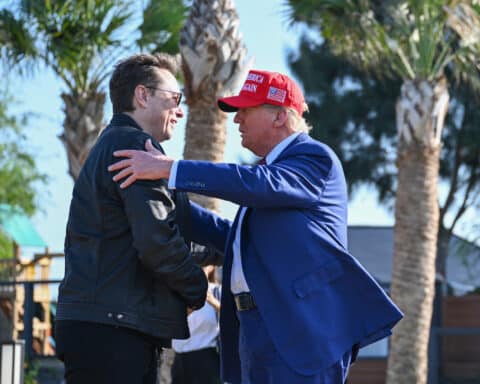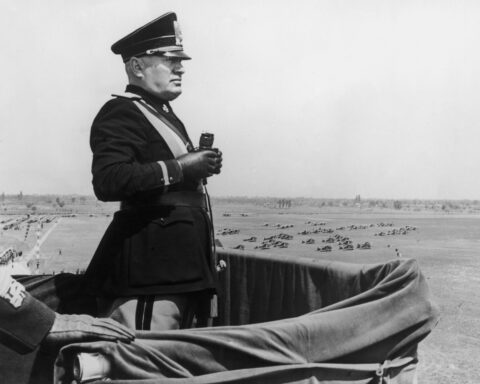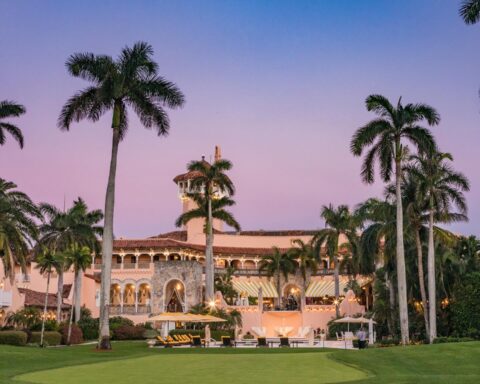On August 6, 1945, the United States dropped the first atomic bomb in history, pulverizing the Japanese city of Hiroshima and a large part of its population. Three days later, the city of Nagasaki suffered the same fate. The carnage caused by the blast, and even more so by the radiation, hastened Japan’s surrender. The world discovered the full horror of nuclear fire.
In the summer of 1945, while the European front was being liberated from the grip of Nazi Germany and its Italian ally, the Pacific front held by the Japanese was still resisting American attacks. Despite repeated incendiary bombings of cities including Tokyo, Emperor Hirohito intended to lead the Japanese people in the fight to the bitter end.
It was in this context that US President Truman and his military advisors saw the successful test of the first atomic device in the New Mexico desert as a weapon capable of ending the war by causing the “total and complete destruction” of entire cities.
The bombs dropped on Hiroshima and Nagasaki directly and indirectly killed at least 214,000 people.
Manhattan Project
In 1939, several scientists, including Albert Einstein, were concerned about the discovery of uranium fission in Germany and urged the US government to pre-empt the Nazis in developing a super bomb.
It was not until December 1942 that the United States launched the Manhattan Project. With a budget of $2 billion (equivalent to approximately $30.6 billion in 2021), this top-secret, high-priority project, led by American physicist Robert Oppenheimer, aimed to design two types of weapons: one based on plutonium and the other on enriched uranium.
The fruit of these years of research came to fruition on July 16, 1945, in Alamogordo. In the early morning, in the New Mexico desert, the Trinity test took place. Robert Oppenheimer witnessed the first test of an atomic bomb containing plutonium from a bunker located 10 km away from the detonation point. The test exceeded the scientists’ expectations in terms of its power.
The energy generated was equivalent to the explosion of approximately 20,000 tons (20 kt) of TNT. The mushroom cloud rose to an altitude of 12 km, temporarily eclipsing the sun. The shock wave was felt 160 km away.
Long opposed to the use of thermonuclear weapons for military purposes, Robert Oppenheimer eventually saw them as a way to “shorten” the conflict and “spare” the lives of thousands of American soldiers.
“Strategic” and “reserved” targets
At the end of April 1945, nearly a week before Germany’s surrender, the Americans defined their criteria for selecting priority Japanese targets. These cities had to be “large urban areas at least [5 kilometers] in diameter in the most populated regions… between the Japanese cities of Tokyo and Nagasaki… [which] had to be of high strategic value.” Seventeen targets were then considered, namely Tokyo Bay, Kawasaki, Yokohama, Nagoya, Osaka, Kobe, Kyoto, Hiroshima, Kure, Yamata, Kokura, Shimosenka, Yamaguchi, Kumamoto, Fukuoka, Nagasaki, and Sasebo.
On July 23, the general staff selected five cities in order of importance for a first nuclear strike: Kyoto, Hiroshima, Yokohama, Kokura, and Niigata.
Among the criteria used in selecting the targets was that of “reserved cities,” meaning cities that had never been bombed before.
This criterion automatically eliminated Yokohama, as the port city had been hit by incendiary devices a few months earlier. As for Kyoto, the ancestral capital of Japan, it owed its salvation to US Secretary of War Henry Stimson, who cited both strategic and sentimental reasons.
Hiroshima (population 290,000), a city that had so far been spared by American air raids, was considered a prime target because of the large military base (43,000 soldiers) located in its center. Hiroshima had another advantage, this time geographical: the surrounding hills would “concentrate” the explosion, considerably increasing its destructive power.
On the same day, July 23, the US president received an estimate of the availability of atomic bombs: Little Boy should be ready for use on August 6, a second Fat Man bomb by August 24, three should be available in September, and then more each month, reaching seven or more by December.
The next day, President Truman issued the Potsdam Declaration, threatening Japan with “swift and utter destruction” and demanding the unconditional surrender of the Japanese armed forces.
On the same day, the US military added a fourth Japanese city to the list of targets for an atomic raid: Nagasaki. But while the city had 9,000 soldiers and 240,000 Japanese residents, it was also home to a prisoner-of-war camp (400 individuals).
Nagasaki was nevertheless considered less important than Kokura, which was then home to one of Japan’s largest arms factories.
Five days after the Potsdam Conference, the Japanese rejected President Truman’s ultimatum. The Americans then carried out their threats.
An intense ball of fire
In the utmost secrecy, the Americans transported the various parts of the bombs by sea. The USS Indianapolis unloaded all the equipment on the island of Tinian, in the Mariana Islands in the western Pacific, which had been recaptured from the Japanese in the summer of 1944 and converted into a giant air base.
Little Boy, an atomic bomb made of enriched uranium, was destined for Hiroshima, the seventh largest city in the Japanese archipelago. The B-29 aircraft, named Enola Gay in honor of pilot Paul Tibbets’ mother, had to fly for seven hours before reaching its drop point.
This first atomic bombing in history, dubbed “Operation Centerboard I,” scheduled for August 1, was ultimately postponed due to a typhoon that struck western Japan.
On August 4, 1945, the bombing mission was approved by the US military high command: it would take place on August 6.
At 8:15 a.m., Little Boy, “a bomb the size of a football,” exploded at an altitude of about 600 meters in a blinding flash, releasing a force equivalent to 15,000 tons of TNT. The temperature at the center of the explosion reached nearly 4,000°C for a brief moment. According to incredulous witnesses, an “intense ball of fire” appeared in the sky.
The city of Hiroshima was destroyed by the explosion over an area of 12 km². Of the 76,000 buildings, 70,000 were damaged or destroyed, including 48,000 that were completely leveled.
The human toll was also considerable. The US Department of Energy estimated that after five years, the number of victims of the tragedy may have been as high as 200,000 or more, while according to the city of Hiroshima, 237,000 people were killed directly or indirectly by the effects of the bomb, including burns, radiation sickness, and cancer.
No sooner had President Truman hailed the success of the operation than the military command decided on August 7, from Guam, to use a second bomb. For the United States, it was a matter of demonstrating the unlimited stockpile of this new weapon and forcing Japan to surrender unconditionally.
This time, the target was Kokura, a city home to one of the country’s largest arms factories.
But on the morning of August 9, visibility was particularly poor due to clouds and thick smoke. As in Hiroshima, the pilots were ordered not to rely on their radar but to drop the bombs on sight.
The result was immediate: “Fat Man,” a plutonium bomb with even more destructive power than the first device (equivalent to 21,000 tons of TNT), missed its target and was dropped over the industrial valley of the city of Nagasaki, halfway between the Mitsubishi Steel and Arms Works steel and arms factory in the south and the Mitsubishi-Urakami Ordnance Works arms factory in the north.
The radius of total destruction caused by the atomic explosion in this port city on the Japanese island of Kyushu extended to nearly 1.6 km. A series of fires broke out and spread across the northern part of the city to 3.2 km south of the bomb’s impact point. Traditional-style buildings located near the impact point, with wooden frames, wooden and paper panels, and tile roofs, were completely destroyed.
However, a navigational error confined the atomic explosion to the Urakami Valley. As a result, a large part of the city was spared from the explosion.
Lasting trauma
With Hiroshima and Nagasaki, two Japanese cities were destroyed, families spanning several generations were traumatized, and poisonous rain contaminated the city’s water supply for a long time.
Faced with the horror of the situation, Emperor Hirohito had no choice but to announce the unconditional surrender of the empire on August 15.
Defeated, Japan had to rebuild an archipelago in ruins and heal the wounds left by three million dead. Although the United States occupied the country until 1952, Japan had to renounce all offensive warfare against its neighbors under its 1947 constitution.
Since the events of 1945, every August 6, the city of Hiroshima is the scene of a large ceremony at the Peace Memorial, located in the city center. At 8:15 a.m., the exact time of the tragedy, the bells of Hiroshima’s temples ring out, along with sirens, while participants observe a minute of silence.
The memorial is located at the Genbaku Dome, the only building that remained standing despite its proximity to the point of impact.
This fear of nuclear fire is ingrained in Japanese cultural products. Witness the giant prehistoric lizard Godzilla, both a cinematic metaphor for the United States and an allegory for nuclear weapons. This sad product of atomic radiation appeared on the big screen in 1954. Other animated films such as Katsuhiro Ōtomo’s Akira (1988) are also steeped in this trauma.
Read also > The Italian economy under Mussolini : between collapse and authoritarian drift
Featured photo: © Unsplash














